Text & Photographs : Manjira Majumdar
Murshidabad, once known as Mukshudabad located on the banks of northern Ganga known as River Bhagirathi, could be written off for being a small district of West Bengal today. The rich legacy, however, of the Nawabi heritage mingled with various other strains make the place anything but insignificant.
Of late, there has been a renewed interest in Murshidabad with two comprehensive books published – Plassey: The Battle that changed the Course of Indian History (Sudeep Chakravarti) and The Anarchist (William Dalrymple), which document the importance of the region. Though tourists flock to the grandest monument in the region — the Hazarduari Palace, literally translated to a palace with thousand doors, and adjacent to it – the Imambara, there are several must-dos by way of tombs, mausoleums, mosques, terracotta temples and palatial mansions. To get a sense of history, traces of Armenian and Dutch footprints on account of trade and commerce should also be viewed to put the town in the historical perspective.
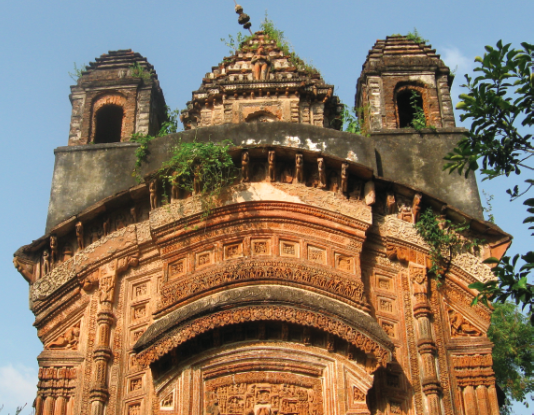
History is all about battles over territorial rights and the stakes obviously are higher if the territory is lucrative. Under Mughal rule, Murshidabad, with good fertile agricultural land, became well-known also for its production of silk and ivory, and highly skilled crafts persons. Being located on the banks of a river facilitated trade and soon, it became the capital of undivided Bengal covering large portions of Orissa and Bihar. It is said Bengal was the richest province under the Mughals and, naturally, when colonisation began, all the East Indian companies (as most European countries such as the French, Dutch and Danes set up an East India Company too), for trade and commerce, fought for control over this river port region. Eventually the British established their supremacy. So it is with British politics that the history of the region is intrinsically linked.
Over centuries, the British had kept sending emissaries to the Mughal court in Delhi for trading favours, but ultimately it was the Battle of Plassey that sealed the fate of the Mughals, considerably weakened over time. Through the chicanery of The Company, local rulers and businessmen, a trading company took over an entire country!
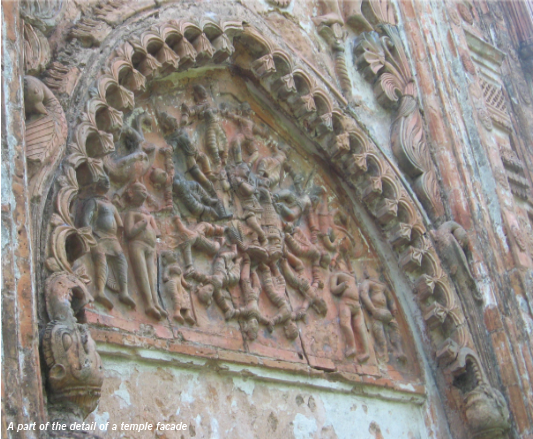
Chequered history
The Company ruled for over a hundred years till it handed over the reins to the Imperial Crown. For unlike what most think, it was not the British monarchy which ruled us. Initially and for a long time, it was the East India Company (EIC), which made Calcutta its headquarters. The British monarchy took over when the EIC was compelled to declare itself bankrupt due to all the plundering and looting. After a long and bitter struggle against the imperial power, the country gained its freedom. By then, Murshidabad was stripped off much of its glory and of course, treasures.
Hazarduari Express hurtles through lush green fields and cows grazing lazily. It crosses a small station Palashi, where the famous or call it infamous, Battle of Plassey was fought, between Siraj-ud Daulah, the last nawab under Mughal rule, and the British forces under Robert Clive in 1757. Rest, as they say, is history. There are numerous stories of political intrigues and betrayals as to what happened but the human interest stories are to be noted as well; of how the British in a bid to promote their own textiles, dealt a death knell to the weavers here by cutting off their fingers!
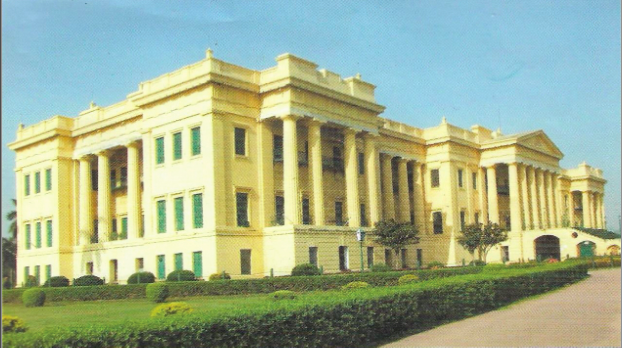
Murshidabad is not known for opulent Mughal architecture. Rather, in keeping with the simplicity of Bengal, the trademark is of burnt terracotta edifices. The only grand building, the Hazarduari Palace or Bara Kothi was built in the nineteenth century and designed by Scottish architect Duncan Macleod under the titular rule of Nazim Humayan Jah. Marked by long verandahs, most of the administrative work was done here. Today, it has been converted into a museum. The illusionary thousand doors made effective through mirrors is the main attraction of the museum, which showcases priceless artefacts utilised by the nawabs, such as the marble throne of Murshid Quili Khan, silver throne of Siraj-ud-Daulha, silver palki, billiard board, and portraits of the nawabs who ruled the region and their families. Silver and ivory items, weapons and daggers with carved ivory handles and manuscripts are on display. So are howdah(s) or canopy seats made of embroidered silks and velvet to be used on elephants.
The Imambara is another impressive structure located opposite this Palace. The Nizamat Imambara is a Shia Muslim congregation hall and the present Nizamat Imambara was built in 1847 AD by Nawab Mansur Ali Khan. The old one, built by Nawab Siraj ud-Daulah was destroyed by fires of 1842 and 1846, because it was made with wood, according to the local guide. A smaller mosque – the Madina mosque is located between the Hazarduari palace and the Imambara. This mosque is believed to have been built from the earth brought from the Islamic holy city of Madina, hence the name, Madina mosque. According to legend, Siraj-ud-Daulah`s mother had promised to build this mosque if her son became a nawab.
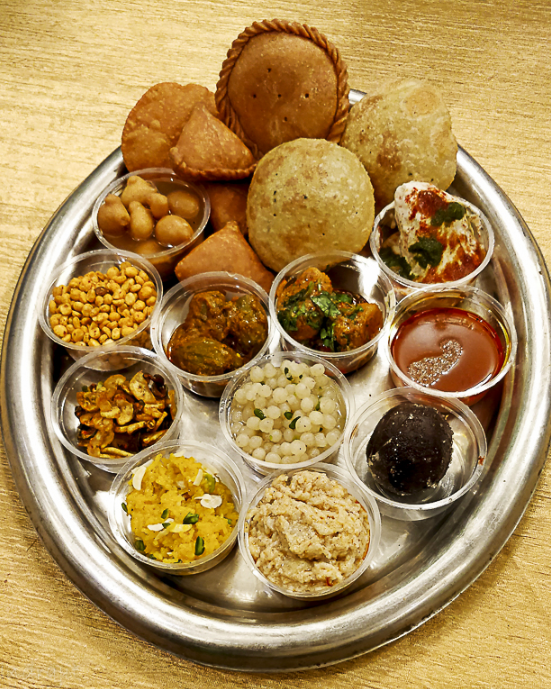
The Katra Mosque is what defines the true history of Murshidabad. There are several mosques which are actually mausoleums. If the Hazarduari Palace galleries showcase various paintings and treasures of the nawabs, the mosques are simple, stark structures, now well maintained by the Archeological Survey of India (ASI).
Murshidabad gets its name from Murshid Quli Khan, who was born a Hindu, and came from the Deccan Plateau. His original name was Surya Narayan Mishra, who was sold as a slave to Haji Ispahan, a merchant of Ispahan. In course of time, he embraced Islam and was renamed Mohammed Hadi. Favoured by Aurangzeb, he become the first Nawab of Bengal, after the Emperor shifted the capital of Bengal from Dacca to Murshidabad. The revenues sent from here to Delhi was one of the highest under him.
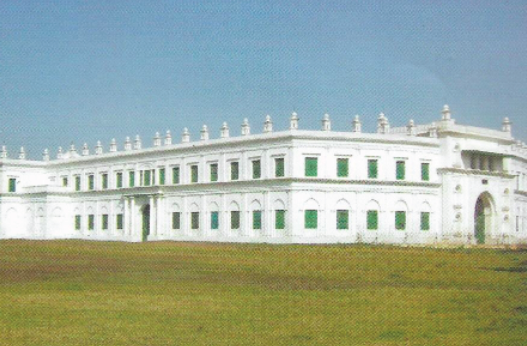
The famous Katra Masjid was built under Murshid Quli Khan’s direction. Only two of the four minarets in four corners of the Masjid remain. Khan is buried under the staircase of this masjid as per his wish that he be penalised for some of his wrong doings. He was succeeded by Shuja-uddin, his son-in-law. Finally the nawab title went to Siraj-ud-Daulah who was betrayed by his general Mir Jaffer, considered a traitor and there is nothing really in his name, except a small neglected grave! Another beautiful mosque, Kadam Sharif said to contain a replica of the footprint of Prophet Mohammad, a huge canon Jahan Kosha and Moti Jheel or the Pearl Lake to the south of the palace are some of the other attractions at Murshidabad.
The small Dutch cemetery and the renovated Armenian Church are the two other relics that are part of the tourist itinerary. The Armenians too came to trade just like the Baghdadi Jews made forays into Calcutta and Dhaka. The Armenian Church too smacks of simplicity in keeping with the rural landscape.
But what makes Murshidabad unique is that some of the mansions and houses built along the banks of the river are palatial; many are now abandoned. They were owned by well-known families. The Murshidabad Heritage Development Society (MHDS) is today actively trying to develop its tourism potential by restoring and reviving the heritages around the adjacent areas of Azimganj and Jiaganj.
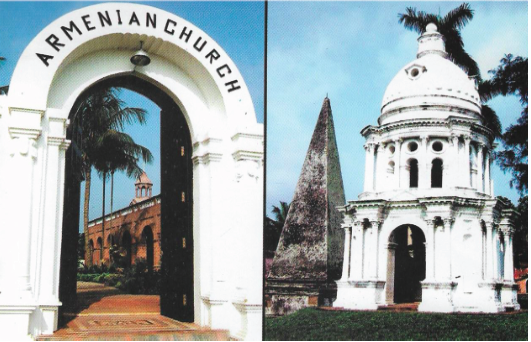
According to a British historian, the wealth of the billionaire families residing in that area was more than the wealth of the entire British empire. It was mostly held by the Oswal Jains who came from Rajasthan in the eighteenth century as Murshidabad was an important trading hub in silk, muslin, ivory, bell metal etc. The Jains came to be known as Sheherwali as the men went to the seher means the town of Murshidabad on work, while their families lived in the twin cities of Azimganj and Jiaganj on either side of the River Bhagirathi.
A rich tapestry
The Sheherwali community, as they came to be known, adapted to the region while clearly retaining their own culture. They built opulent mansions in an architectural blend of European, Bengal and Rajasthani styles and several Jain temples. A fusion cuisine evolved among this community that is considered very unique; till now available only in private homes. Attempts are being today to make the cuisine public through food festivals and during trips organised by MHDS. Plans are afoot to convert some of these mansions into luxury hotels.
The cuisine of the Sheherwalis, strictly vegetarian, is fused with local spices like the paanch phoron with Mughal influences of rose water, saffron and dry fruits. Rest is in their liberal use of wheat, ghee, and curd. Murshidabad also is a mango growing region and the nawabs developed various hybrids so the Sheherwali cuisine include liberal use of mangoes, especially in their dessert. The Bengali mishti (sweet) channa bora is a speciality of Murshidabad district; it resembles the kala jamun; a very crusty outside holding a soft and sweet channa or cottage cheese mixture inside.
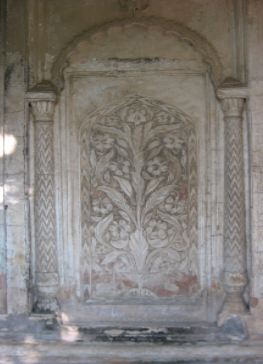
Azimganj has its fair share of temples in the Bishnupur terracotta style. Though not many, a few have exquisite carvings. The Maharani of Natore (Rajshahi, now Bangladesh) Rani Bhavani had commissioned several temples here and one of them is the richly carved Char Bangla temple with the typical atchala style roofs. Several temples are in ruins existing amidst weeds.
Murshidabad was also a well-known centre for weaving muslins and silks under the patronage of Muslim rulers. But even before that it was a great centre of weaving under the Malla kings.
Later the centre of weaving moved to Bishnupur in Bankura district. Baluchar was a village, but the shifting sands of the river and flooding of the village, displaced the weavers. The art of weaving such saris then shifted outside. This special craft of weaving mythical figures on its borders and pallu on traditional looms received a death blow under the British, who in a bid to encourage mill made clothes from England, squeezed the weavers out. It was not until the middle of the twentieth century that the weaving of Baluchari saris was revived, with the introduction of jacquard looms. These looms make the production of a sari quicker and less labourious.
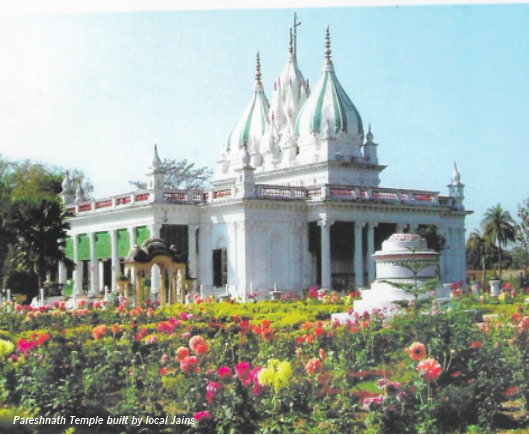
The Baluchari sari is known for their resham or silk motifs of entire stories out of Hindu mythologies woven on its borders and pallu. Chapters from Ramayana and Mahabharat are the most popular. For those not preferring these motifs, the paisley is the most common motif.
Whatever maybe the case, Murshidabad today steeped in past glory is a neglected part of the country. The State Government is trying to bring in the development that the region is in need of, but as far as tourism goes it would have to inject more funds to make it more vibrant. Better infrastructure, more restaurants catering to the local diverse cuisine, and to revive the silk industry are areas that need to be seriously addressed.
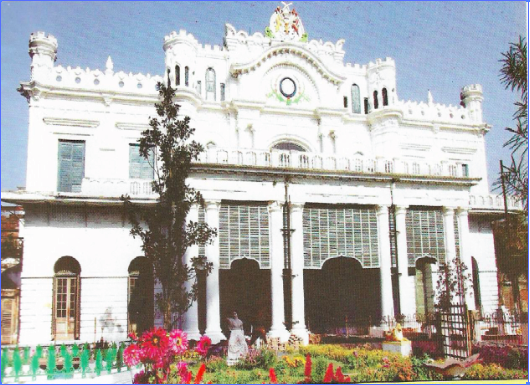
So Murshidabad remains a quick getaway from Kolkata and a couple of days are enough to pack in the major landmarks. Plan your tour according to the areas in which they are located. You may even be surprised by some old relic not part of the tour, but standing forlorn and a mute testimony of a time gone by.
How to reach Murshidabad
Murshidabad is about six hours journey from Kolkata in an Express train, of which there are quite a few. One can also drive down from Kolkata. The local Hazarduari Express which leaves Chitpur station (as different to Howrah and Sealdah stations) early morning, reaches around noon. It stops at Baharampur/Berhampore, the administrative town of Murshidabad. The tidy State guest house is located here; otherwise many budget hotels abound. One can also take a bus to Berhampur and hire either an auto-rickshaw to Murshidabad.


 [/column]
[/column]